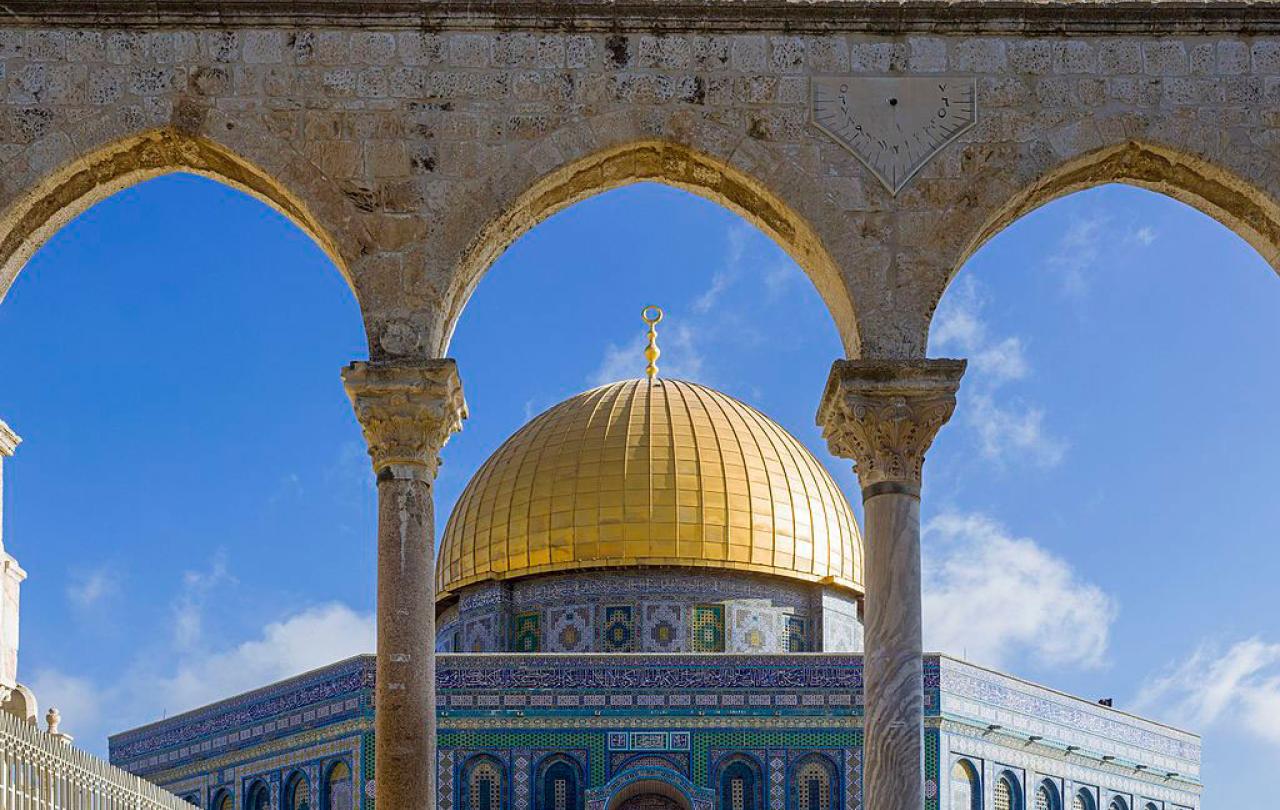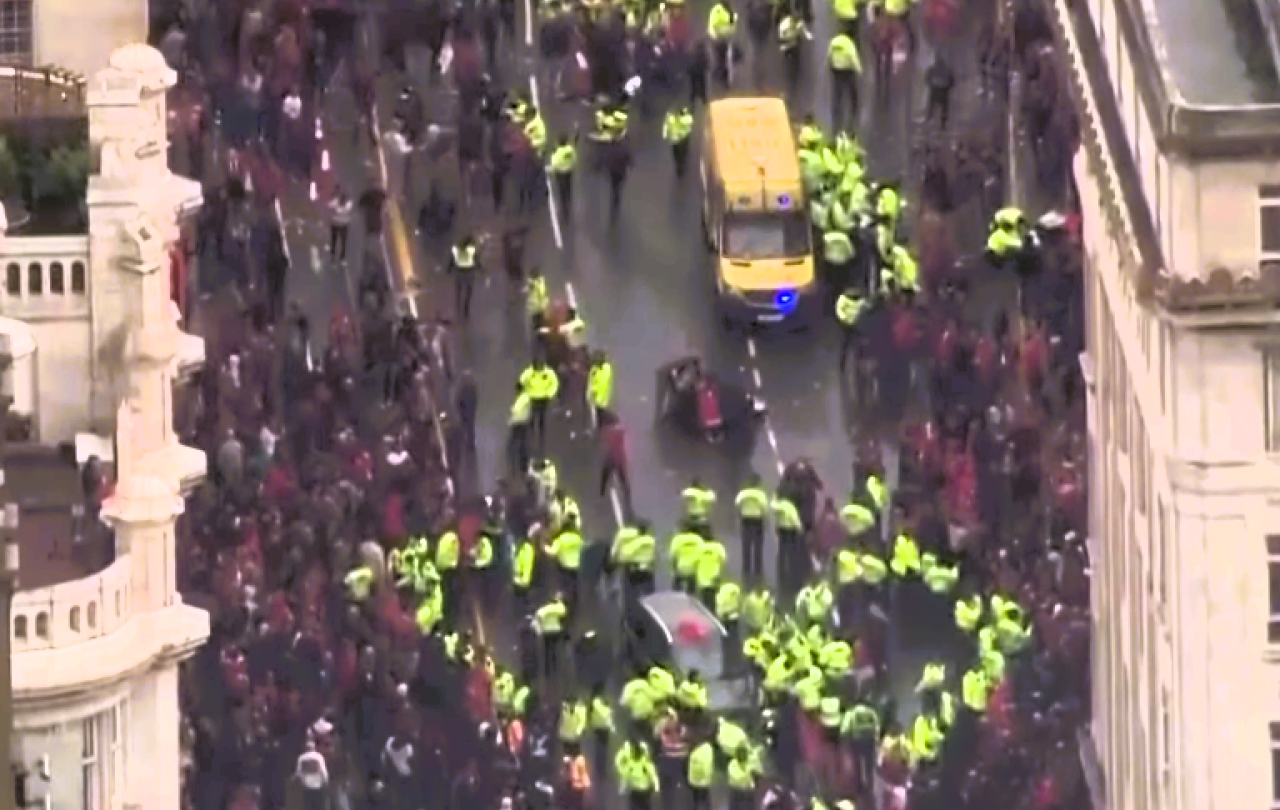
It was Saturday 14 October last year. BBC Radio were about to play a pre-recorded interview with a spokesman for Hamas and needed to explain to listeners something in advance: “the reference you will hear in a moment, stating that one of the causes of the Gaza conflict is the desire to preserve the freedom of ‘Al Aqsa’, is a references to the Al Aqsa mosque in Jerusalem—regarded as the third holiest site in the Muslim world”.
That was it in a nutshell. The Hamas spokesman was making it plain that, behind all the many political causes of the conflict erupting so tragically in the Holy Land, there was an essentially theological issue. Yes, as in other conflicts around the world, there are strong human desires in both Israeli and Palestinian communities to live in a place of security and to have their aspirations for some political independence to be adequately met, but here in the Holy Land there is an irreducible ‘God-component’ to the conflict.
The heart of the conflict
It’s not just that the conflict is predominantly between two major monotheistic religions—Judaism and Islam. It’s that those two world-religions have conflicting theological views—derived from their respective scriptures, the Hebrew Bible and the Quran—about physical places in the Holy land. And, even more particularly, they are have essentially contradictory views about the piece of land which Christians now often refer to as the ‘Temple Mount’: namely, the place where the former Jewish Temple stood, but which Muslims refer to as Haram Esh Sharif (‘the noble sanctuary’), because it is now the site both of the Dome of the Rock and the above-mentioned Al Aqsa mosque.
This is the most contested piece of real estate on the planet. The same site is, on the one hand, revered by Jews as the site of Solomon’s temple centred on the ‘holy of holies’ and, on the other, is revered by Muslims as the place from which Muhammed went on his mysterious ‘night journey’ up to heaven and back, as recounted in the Qu’ran. So, for both religions the site is not just of historical interest but rather is invested with theological weight—as a place associated like no other, with God himself.
The Hamas spokesman was thus helpfully laying bare the irreducible theological crux at the root of this conflict. Secular politicians and humanitarian agencies might want to take this ‘God-component’ out of the equation, but it will not go away. For this conflict is based on essentially contradictory views about how God connects to Jerusalem and especially to the Temple Mount.
Enter Jesus
The familiar story of Jesus’ triumphal entry into Jerusalem is remembered on Palm Sunday every year. It is an event with layers upon layers of meaning. At its heart, however, is the conviction of the Gospel writers and of the early Christians that Jesus had entered Jerusalem as the human embodiment of God himself.
A hint of this may be found in the way that Jesus, when criticised by the religious leaders for the extravagant claims the crowds were making for Jesus at that moment (especially haling him as the ‘Messiah’), himself claims that “even the stones would cry out” in honour of him, if they could—presumably because they know that their Creator was passing by at just that moment!
Yet this conviction—that Jesus had been the human embodiment of God—is perhaps best sensed when we note how Jesus’ coming over the Mount of Olives into Jerusalem can, arguably, be seen as the return of the Lord’s Shekinah glory into the Temple. This comes through noting a highly significant passage in the Old Testament book of Ezekiel. The prophet, writing from exile in Babylon, had seen a vision about the ‘glory of the God of Israel’: ‘the glory of the Lord went up from within the city and stopped above the mountain to the east of it’ — in other words the Mount of Olives, the hill to the east of the city of Jerusalem, that looked over the Temple Mount
Now Jesus comes over the Mount of Olives and storms into the Temple: this is Ezekiel’s vision but now in reverse. He is embodying the return of the Lord’s glory; he is the personal presence of Israel’s God; he is, as the prophet Malachi predicted, ‘the Lord himself coming into his Temple’.
If true, then Jesus was God’s embodied presence coming into the Temple. God had previously made the Temple to be the place where he dwelt on earth; now Jesus was that presence himself—in human form.
And, when Jesus goes on solemnly to announce that “your house is left desolate”, he is making it clear that that divine presence, which had genuinely filled the Temple back in the days of Solomon, was now being removed once and for all.
After some further teaching Jesus eventually makes his own final departure from the Temple precincts—a clear sign for the writer of Matthew’s Gospel that Jesus is taking the divine presence with him out of the building. And a few weeks later, as described by Luke, we are presented with the picture of Jesus taking divine presence back into heaven in the event of the Ascension.
Viewed in this way, we can see the whole story of Jesus’ going into the Temple as effectively a ‘de-secration’ of the Temple. He was making it clear that he alone was now where God’s presence was to be found. Divine presence was no longer to be associated with a place, but with a person.
Back to the present
Coming back to the present day, then, there is a profound sense in which those who associate the former Temple Mount with a doctrine of divine presence are chasing after ‘thin air’. The Temple once upon a time had housed the presence of God, but, according to this Christian understanding, it does so no longer—it is an ‘empty pot of gold’. ‘The Glory has departed’—in Jesus.
If so, this major source of tension in the contemporary Middle East—the conflicting theologies of Judaism and Islam concerning the sanctity of the Temple Mount and its historic connection to God’s presence—can only be resolved by a recognition that Jesus has decisively changed all this.
If Jesus is ‘God incarnate’ (something clearly not recognised in Judaism and Islam)—if, in other words, he is the place where we go to find God—then that takes the ‘God-component’ out of the equation and brings to an end the elevated status that so many give to Jerusalem and the Temple.
Jerusalem, understood in this way, now points in God’s purposes to the far greater reality of Jesus Christ who alone embodies the true presence of God in human form. Jesus himself said that “one greater than the Temple is here”. But, tragically, the overwhelming majority of those who live in Jerusalem and the Holy Land today are committed to religious systems which deny these and other New Testament claims for Jesus.
Taking this further
Alternatively, you might like to access to a suite of resources for Holy Week: take your pick from some ‘In the Steps of Jesus’ videos (filmed in Jerusalem), or some audio recordings (‘The Week that Changed the World’) or a book (‘Immersed in the Passion’) that retells the story from Palm Sunday to Easter Day.





